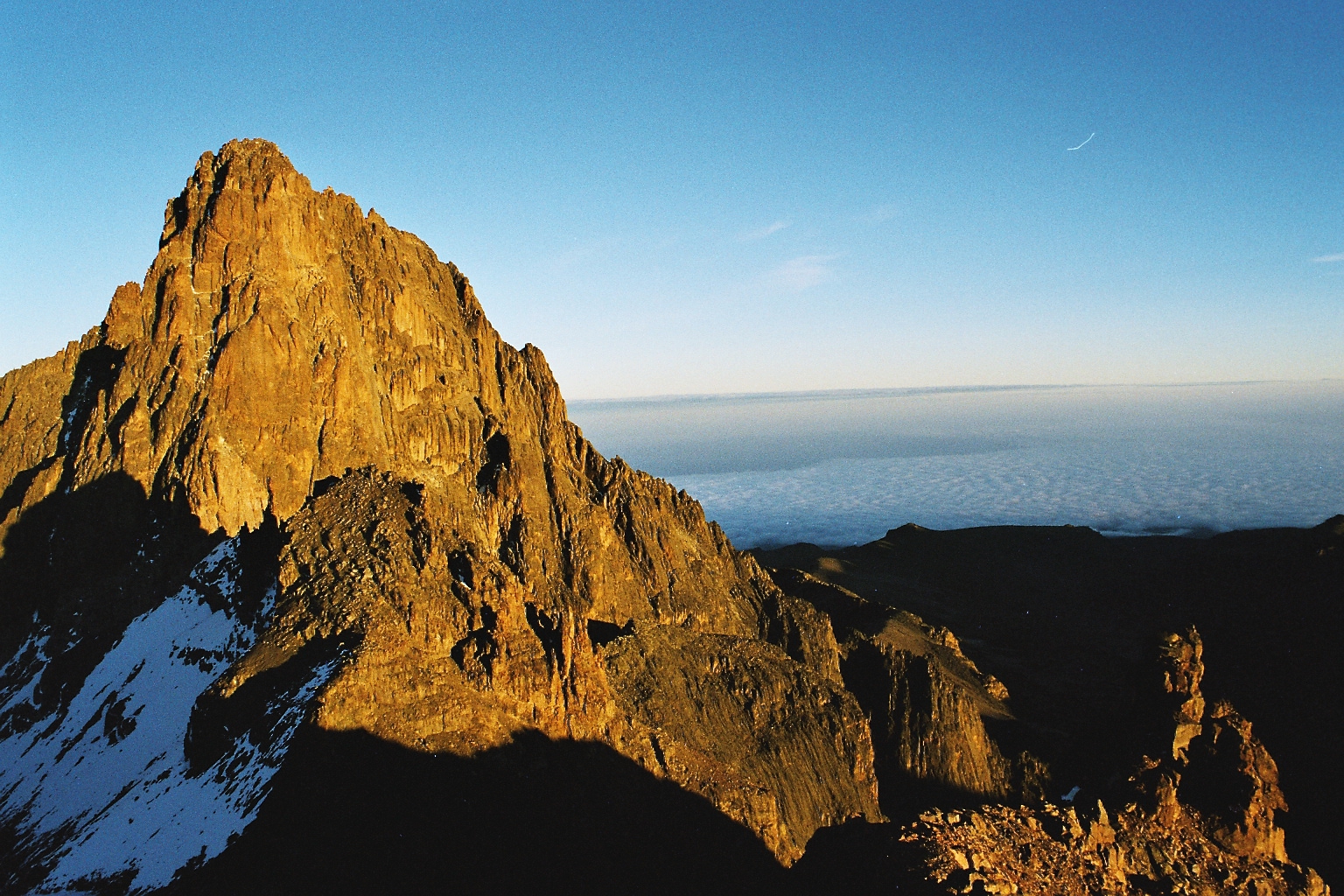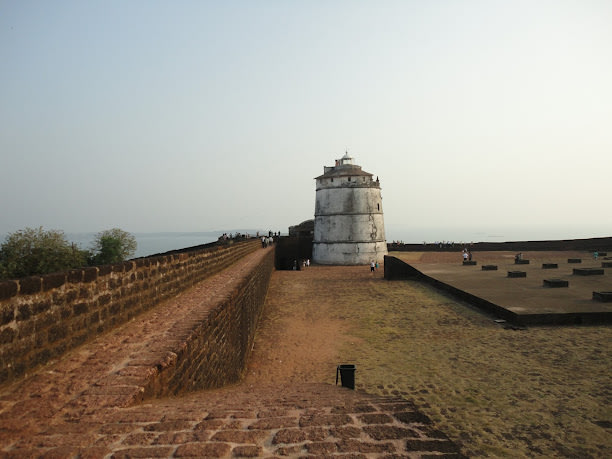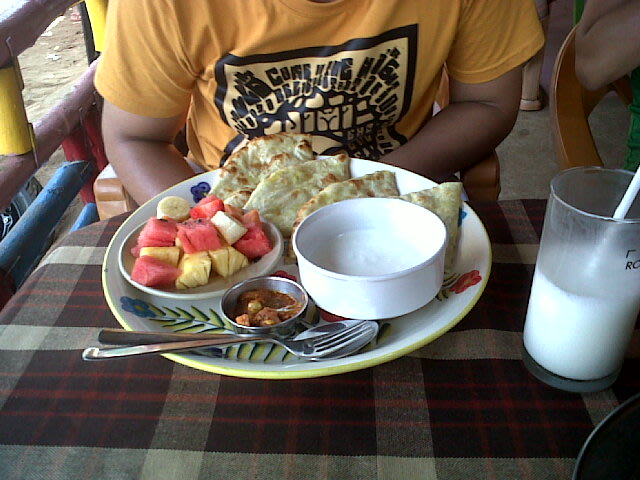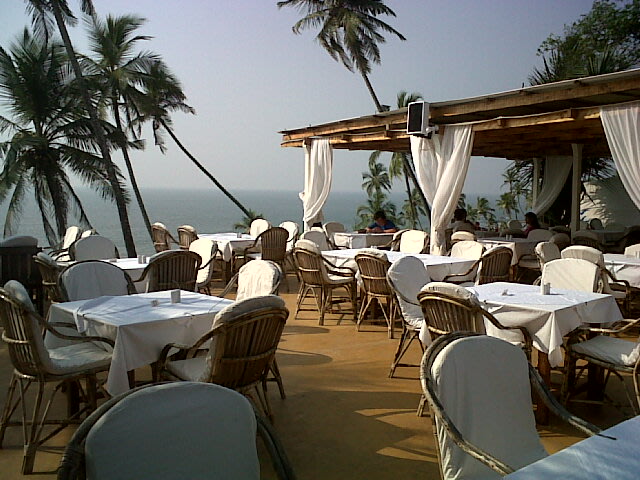Emergence of the Nation. The
Great Rift Valley is thought to be one of the places where human beings
originated, and archeologists working in the valley have found remains of what
they speculate are some of the earliest human ancestors. The first known
inhabitants of present-day Kenya were
Cushitic-speaking tribes that migrated to the northwest region from Ethiopa
around 2000 B.C.E. Eastern Cushites began to arrive about one thousand years
later, and occupied much of the country's current area. During the period from
500 B.C.E. to 500 C.E. , other tribes arrived from various parts of Africa. Tribal disagreements often led
to war during this time.
In the 900s, Arab merchants arrived and established trading centers along the
coast of East Africa. Over the ensuing eight centuries, they succeeded in
converting many Kenyans to Islam. Some Arabs settled in the area and
intermarried with local groups.
Portuguese explorer Vasco da Gama landed at Mombasa in 1498, after discovering a
sailing route around the Cape of Good Hope. The Portuguese colonized much of
the region, but the Arabs managed to evict them in 1729. In the mid-1800s,
European explorers stumbled upon Mount Kilimanjaro and Mount Kenya, and began
to take an interest in the natural resources of East Africa. Christian
missionaries came as well, drawn by the large numbers of prospective converts.
Britain gradually increased its
domain in the region, and in 1884–1885, Kenya was named a British protectorate
by the Congress of Berlin, which divided the African continent among various
European powers. The British constructed the Uganda Railway, which connected
the ports on Kenya's coast to landlocked Uganda. The increasing economic
opportunities brought thousands of British settlers who displaced many
Africans, often forcing them to live on reservations. The Africans resisted—the
Kikuyu in particular put up a strong fight—but they were defeated by the
superior military power of the British.
During the early twentieth
century, the British colonizers forced the Africans to work their farms in
virtual slavery, and kept the upper hand by making it illegal for the Kenyans
to grow their own food. In the early 1920s, a Kikuyu named Harry Thuku began to
encourage rebellion among his tribe and founded the East Africa Association. He
was arrested by the British in 1922, provoking a popular protest. The British
reacted violently, killing twenty-five people in what came to be called the
Nairobi Massacre.
Desire for self-rule continued to
build and in 1944 the Kenya African Union, a nationalist party, was founded. In
1946, the Kikuyu leader Jomo Kenyatta returned after sixteen years in England
and began agitating for Kenyan independence. Back on his home soil, he was
elected president of the
Turkana men working at a gold mine
in northern Kenya pass blocks of gold-bearing ore to the surface of a shaft.
The mines often lie sixty or so feet below the ground.
Kenya African Union. His rallying
cry was uhuru, Swahili for freedom. While Kenyatta advocated peaceful
rebellion, other Kikuyu formed secret societies that pledged to win
independence for Kenya using whatever means necessary, including violence. In
the early 1950s, members of these groups (called Mau Mau) murdered 32 white
civilians, as well as 167 police officers and 1,819 Kikuyu who disagreed with
their absolutist stance or who supported the colonial government. In
retaliation for these murders, the British killed a total of 11,503 Mau Mau and
their sympathizers. British policy also included displacing entire tribes and interning
them in barbed-wire camps.
Despite Kenyatta's public
denouncement of the Mau Mau, the British tried him as a Mau Mau leader and
imprisoned him for nine years. While Kenyatta was in jail, two other leaders
stepped in to fill his place. Tom Mboya, of the Luo tribe, was the more
moderate of the two, and had the support of Western nations. Oginga Oginga,
also a Luo, was more radical, and received support from the Soviet bloc. One
common goal of the two was to give blacks the right to vote. In a 1957 election,
blacks won their first representation in the colonial government and eight
blacks were elected to seats in the legislature. By 1961, they constituted a
majority of the body.
In 1960 at the Lancaster House
Conference in London the English approved Kenyan independence, setting the date
for December 1963. Kenyatta, released from prison in 1961, became prime
minister of a newly independent Kenya on 12 December 1963 and was elected to
the office of president the following year. Although he was a Kikuyu, one of
Kenyatta's primary goals was to overcome tribalism. He appointed members of
different ethnic groups to his government, including Mboya and Oginga. His
slogan became harambee, meaning "Let's all pull together." In 1966,
however, Oginga abrogated his position as vice-president to start his own
political party. Kenyatta, fearing cultural divisiveness, arrested Oginga and
outlawed all political parties except his own. On 5 July 1969, Tom Mboya was
assassinated, and tensions between the Luo and the Kikuyu increased. In
elections later that year, Kenyatta won reelection and political stability
returned. Overall, the fifteen years of Kenyatta's presidency were a time of
economic and political stability. When Kenyatta died on 22 August 1978, the
entire nation mourned his death. The vice-president, Daniel Toroitich arap Moi
(a Kalenjin of the Tugen subgroup) took over. His presidency was confirmed in a
general election ninety days later.
Moi initially promised to improve
on Kenyatta's government by ending corruption and releasing political
prisoners. While he made some progress on these goals, Moi gradually restricted
people's liberty, outlawing all political parties except his own. In 1982, a
military coup attempted to overthrow Moi. The coup was unsuccessful, and the
president responded by temporarily closing the University of Nairobi, shutting
down churches that dissented from his view, and giving himself the power to
appoint and fire judges. Moi did away with secret ballots, and several times
changed election dates spontaneously to keep people from voting. Moi's
opposition has faced even more blatant obstacles: Legislator Charles Rubia, who
protested the policy of waiting in line to vote, was arrested and later lost
his seat in a rigged election; Robert Ouko, Moi's Minister of Foreign Affairs,
threatened to expose government corruption, and was later found with a bullet
in his head, his body severely burned. Pro-democracy demonstrations in the
early 1990s were put down by paramilitary troops, and leaders of the opposition
were thrown in jail. Western nations responded by demanding that Kenya hold
multi-party elections if they wanted to continue to receive foreign aid, and in
December 1992 Moi won reelection, despite widespread complaints of bribery and
ballot tampering. During this time, the economy floundered: inflation
skyrocketed, the Kenyan currency was devalued by 50 percent, and unemployment
rose.
In 1995, the various opposition
groups united in an attempt to wrest the presidency from Moi and formed a political
party called Safina. Opposition efforts have been unsuccessful so far, however.
In July 1997, demonstrators demanding constitutional reforms were teargassed,
shot, and beaten, resulting in eleven deaths.
Despite Moi's unpopularity and
his advanced age (he was born in 1924), he maintains his grip on the
presidency. Kenya continues to suffer from tribalism and corruption, as well as
high population growth, unemployment, political instability, and the AIDS
epidemic.
National Identity. Kenyans tend to identify primarily with
their tribe or ethnic group, and only secondarily with the nation as a whole.
The Kikuyu, who were better represented in the independence movement than other
groups, and who continue to dominate the government, are more likely to identify
themselves as Kenyans.
Ethnic Relations. The Kikuyu are the largest tribe in the
highlands, and tend to dominate the nation's politics. Over the centuries, they
consolidated their power by trading portions of their harvests to the
hunter-gatherers for land, as well as through inter-marriage. This gradual rise
to domination was peaceful and involved a mingling of different ethnic groups.
While the Kikuyu have enjoyed the most power in the post–independence
government, they were also the hardest–hit by brutal British policies during
the colonial period. The Kikuyu traditionally had an antagonistic relationship
with the Maasai, and the two groups often raided each other's villages and
cattle herds. At the same time, there was a good deal of intermarriage and
cultural borrowing between the two groups. Relations among various other ethnic
groups are also fraught with tension, and this has been a major obstacle in
creating a united Kenya. These conflicts are partly a legacy of colonial rule:
the British exaggerated ethnic tensions and played one group against another to
reinforce their own power. Under British rule, different ethnic groups were
confined to specific geographic areas. Ethnic tensions continue to this day,
and have been the cause of violence. In the early 1990s tribal clashes killed
thousands of people and left tens of thousands homeless. Conflicts flared again
in the late 1990s between the Pokots and the Marakwets, the Turkanas and the
Samburus, and the Maasai and the Kisii.
Kenya has a fairly large Indian
population, mostly those who came to East Africa in the early twentieth century
to work on the railroad. Many Indians later became merchants and storeowners.
During colonial times, they occupied a racial netherland: they were treated
poorly by the British (although not as poorly as blacks), and resented by the
Africans. Even after independence, this resentment continued and half of the
Indian population left the country.































